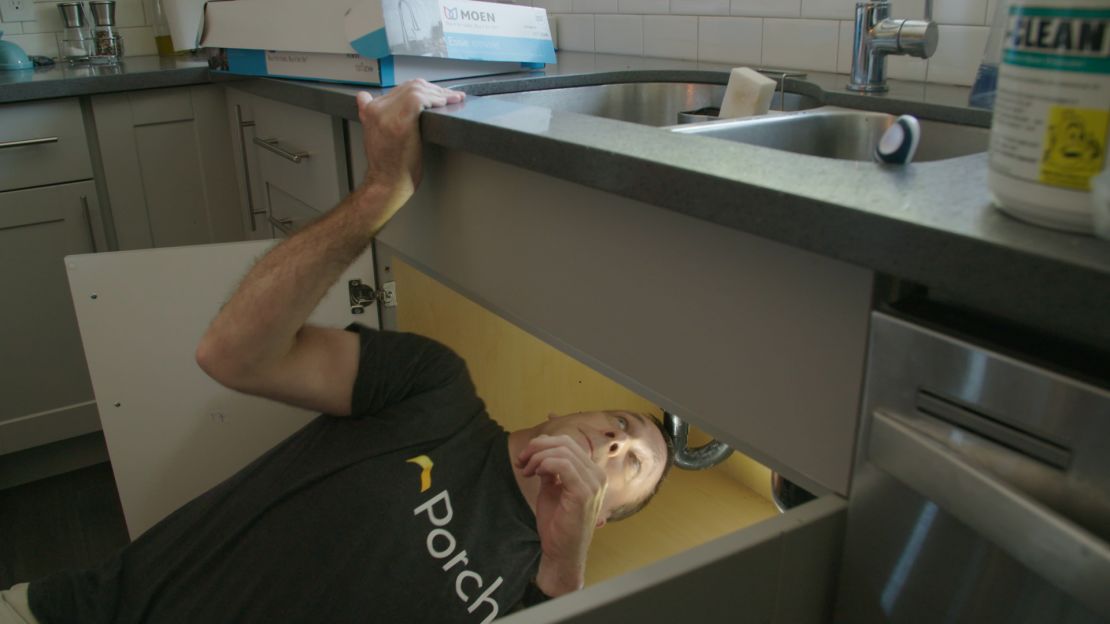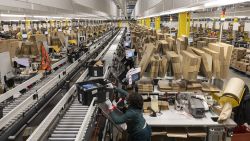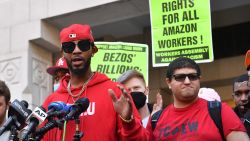Four years ago, Bobbie Moe, who owns a cleaning service in Seattle with her husband Eric, got a call from the city’s resident corporate behemoth — Amazon — asking for help.
Amazon wanted the Moes’ business, Alpine Specialty Cleaning, to participate in a pilot program that would sell housecleaning services to consumers. Thinking it could drive more business, they signed up, and started taking jobs that had been booked through the site.
It was a disaster.
“They really didn’t listen to those of us who’ve been in the business for decades,” says Bobbie Moe. Customers would punch in their cleaning needs and the square footage of their house online, but the actual time and manpower required would vary wildly with the cleaning needs of the home.
“If they weren’t happy, then we had to eat it, or do redos,” Moe says of her Amazon clients. She kept trying for nearly two years. Between 2015 and early 2017, the company took a total of 126 jobs through Amazon. “At the end of the pilot testing phase, we said ‘This isn’t working for us.’”
![[Clockwise from top left]: Alpine Specialty Cleaning founder Maurice Moe at the old offices in 2005; Alpine's first cleaning van in 1970; today's owners, Eric and Bobbie Moe; a worker cleaning carpets; making a housecall; a powerwasher.](https://media.cnn.com/api/v1/images/stellar/prod/181023173904-20181023-alpine-cleaners-collage-gfx.jpg?q=w_1110,c_fill)
Patrick Bigatel, a 13-year Amazon veteran who now leads the home services division, says the company has learned from the experiment. It now asks customers to list the number of rooms in a house, which is a better indication of how long a job will take.
“When we were first starting, we were learning,” Bigatel says. “Housecleaning was one of our more challenging services.”
Since those early days in Seattle, Amazon now offers a range of home services — everything from pressure washing to iPhone repair — in 45,000 US zip codes and parts of India and Europe. It says that in the “low tens of thousands” of businesses operate on the services platform, and that customer ratings are high.
But beyond that, little else is known about the division’s performance. Amazon has declined to disclose other metrics, such as revenue for the fledgling business or average service provider income. It also hasn’t spoken much about the division during earnings calls. RJ Hottovy, a retail analyst at Morningstar, says it seems that Amazon is still trying to figure out the market.

While Amazon has been trying to make hiring help as easy as ordering paper towels, services are a much more complex market than physical goods. Parameters aren’t always clear, labor can’t be shipped instantly wherever it’s needed, and purchases can’t be returned.
“This is one where it’s taken them a little bit longer,” says Hottovy. “At the end of the day, it is still a labor-intensive process. It’s not like you have the predictability of delivering products.”
A fractured market
For years, Internet entrepreneurs have been trying to crack into the cleaning and maintenance market, which is estimated to be worth hundreds of billions of dollars. Although some businesses have achieved scale through franchising, the industry has long relied on word-of-mouth, coffee shop bulletin boards and handbills to find clients.
In the 1990s, startups Angie’s List and ServiceMagic (later renamed HomeAdvisor) found a way into this market by charging buyers for access to reviews and listings or service providers for customer leads.
The 2010s saw the rise of more newcomers like Thumbtack, Porch and Handy, which either charge per lead or take a cut of each transaction on their platform. There are now so many options for connecting customers with service providers that Facebook Marketplace serves as a platform of platforms, hosting listings from all of them.

Still, while shopping for services has moved online, most of the actual business is still conducted offline.
Amazon’s competitive advantage lies in offering services bundled with other products. For example, if you order a widescreen TV or Weber gas grill on Amazon, you can also find someone who can come install it. Lately, they’ve been offering $30 discounts on home cleaning services.
But to consistently deliver on that promise, Amazon has to attract people to perform the services, many of whom have varying levels of availability and are already overwhelmed by the number of platforms to choose from.
Mixed reviews
Meagan Perkins has tried them all.
She started Citrus Fresh Carpet Cleaning in Atlanta nine years ago and initially found customers through Craigslist and by mailing out fliers. To broaden her reach, she started marketing her services on Google, which first required her to pass a background check. She eventually signed up for Yelp, Porch, Thumbtack, Angie’s List, HomeAdvisor and Groupon. The sites ping her constantly with potential jobs. Sometimes they yield new clients, but it’s a lot to keep track of.
So Perkins was excited about the prospect of operating on Amazon’s platform, which offers access to more potential customers than any other, and signed up last December.
The way it’s supposed to work, Amazon sends a customer request to the service providers, along with the price Amazon sets — which is determined by an algorithm — and the windows of time when the customer would like the job done. Amazon takes a flat 20% of the value of each job, except for recurring services, for which the cut is 15%. Amazon says that’s based on the money it saves service providers in advertising, credit card processing fees and other costs to acquire customers.
Perkins says she has responded to every offer. But after months of trying, she only landed her first job on Monday. That may be in part because Amazon’s algorithm rewards those who’ve already completed many jobs successfully. Although Bigatel says there are “intentional processes in place to ensure new service providers have an opportunity to get jobs,” they’re more focused on providing more work for existing service providers than on recruiting new ones.
“I will clear my schedule for Amazon,” Perkins says. “I’m very excited about it, but I don’t know what else to do. I feel like a high school girl who’s been rejected.”
The only thing that’s worked well so far, she says: HomeKeepr, which operates as a referral service for realtors to offer contractors and other professionals to their clients.
Many service providers just don’t want to give up 20% of their revenue in order to generate business. Although Amazon isn’t the only one that takes a hefty cut. Handy, for example, pays based on a service provider’s city and level of experience and charges the customer about double that, depending on whether it’s a recurring order. Thumbtack charges a fee per potential customer that varies with the size of the job.
The United States of Amazon
“We would never consider handing any amount of money to a third-party player like Amazon,” says April Lane, another Seattle-based cleaning company owner. “We love Amazon for supplies, and anything we need to buy retail. But they will not become a middleman for our services.”
But those who are happy working through Amazon say that it’s possible to make a good living, as long as you play by the rules.
Dmitri Pintchouk started working on the Amazon platform about three and a half years ago after an Amazon representative reached out and asked him to sign up. As an acoustic sound engineer based in Staten Island, he had a small business that employed a handful of people building sound systems in studios and smart homes.
After a while, however, Pintchouk realized that Amazon was sending more business his way than other sites, like Google. Eventually, he decided to operate solely over Amazon’s platform and focus just on TV installations. Unlike complex sound design jobs, installing a TV is quick and straightforward, allowing him to bang out six or seven in a day at between $80 and $150 a pop. Now, all his former employees work through Amazon as well, freeing him from the responsibility of making payroll and paying rent for an office.
“It’s a lot of things that Amazon lets me not to worry about anymore,” says Pintchouk, who now operates under the name Hi Tech Unit Installation.
At first, it was hard to get used to Amazon’s requirements, like making sure to communicate with customers about arrival times and payments exclusively through Amazon’s platform. But once he did, and garnered more good reviews, Pintchouk says the algorithms have kept him busy and well compensated.
“If you don’t comply with the rules, don’t expect anything good,” he says. “If you do the right job, you speak with clients in the right manner, you’re clean and professional, it cannot not work.”
“Everyone else vs. Amazon”
Gaining traction in the services business remains difficult. But rather than give up, Amazon has tweaked its model. It has tried out new verticals, like partnering with Audi to install electric vehicle charging stations, and tied in services to Amazon’s own products. Buyers of Fire TVs and Alexa personal assistants can hire Amazon technicians to help set them up and troubleshoot problems, for example. More recently, Amazon expanded into business contracting, offering services like office cleaning and phone system setup.
And in early 2018, it experimented with hiring its own home cleaners directly, giving up the flexibility and low costs of the contractor approach for more control over quality and staffing.
Brant Insero is the director of education and certification for cleaning industry trade group ISSA, and sent trainers out to Seattle in December 2017 to show Amazon’s staff the ropes. Although Amazon’s retail dominance poses a tough challenge for some of ISSA’s members that distribute cleaning products, Insero says that service providers haven’t felt pressure from Amazon.
“I don’t know if Amazon is ready to run a cleaning service,” he says. “At the end of the day, Amazon understands distribution, shipping, and warehousing. That’s different from having 500 employees out cleaning facilities.”
Amazon’s Bigatel says the cleaning service experiment continues in Seattle, but they haven’t expanded it to other markets.

Still, many of Amazon’s competitors are taking steps to counter the behemoth. Their primary strategy: Partner up with large retailers in order to gain the synergy between goods and services that Amazon already has.
In 2017 Ikea bought TaskRabbit, where being hired to assemble the Swedish company’s furniture was already a common job. Porch, a home improvement platform founded in 2012, has agreements to offer services through Overstock, Lowe’s, West Elm, and Walmart, which also works with the home cleaning and maintenance platform Handy.
“A company like Amazon, in any industry they enter into, has certain advantages,” says Porch CEO Matt Erlichman. “It’s one of the reasons that for Porch, partners are important for us. It’s kind of Porch and everyone else vs. Amazon.”
Even the industry’s most established player, Angie’s List — now called ANGI Homeservices, after IAC bought it and combined it with HomeAdvisor in 2017 — brushes Amazon off. When asked on an earnings call this spring about the competitive threat of large internet platforms moving into the industry, CEO Christopher Terrill listed off a litany of reasons why selling home services online wouldn’t be an easy market to enter.
“We’ve seen other folks try to participate in this space, and they’ve found it incredibly difficult and hard,” Terrill said. “I think anyone looking from the outside in and trying to reverse engineer this business, good luck. There are other businesses, you can do that, but this one’s pretty tough.”
As its hotly-contested and widely-publicized search for a second headquarters draws to a close, CNN Business is taking a top-to-bottom look at Amazon’s present — and what it means to our future in its series, The United States of Amazon.



















